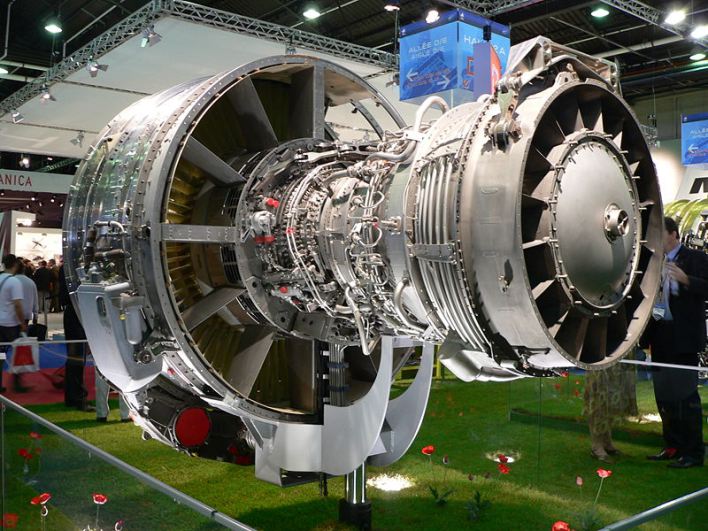
Chemtrails Confirmed Again: Modern Turbofan Engines Less Likely to Produce Contrails
Since 80% of the air providing thrust bypasses direct combustion, the engine exhaust is not capable of producing the water vapor required to form a contrail.
(SCROLL DOWN)
*
*
*
*
*
*
*
*
*
*
*
*
REASONING
The main products of hydrocarbon fuel combustion in a jet engine are carbon dioxide and water vapor.
In older designs of Ramjet and “low-bypass” jet engines, contrails were readily formed at altitudes above 26,000 feet when water vapor (produced by fuel combustion) raised the relative humidity past the saturation point of the atmosphere outside the aircraft.
Water vapor, blown out the engine exhaust would form a visible contrail of ice crystals as it cooled at a distance of approximately one and one-half wing-spans behind the engine. Tiny particulates of sulfur in the jet exhaust would allow the super-cooled water to crystallize into the familiar jet contrail formation that almost always dissipated within several seconds behind the aircraft.
How a High-Bypass Jet Works
The efficiency of high bypass jet engine design is a radical departure from the older low-bypass engines.
Why Modern High Bypass Jet engines almost never produce contrails:
The term “high bypass” refers to the high ratio of thrust produced by air that is not subjected directly to hydrocarbon fuel combustion. Since 80% of the air providing thrust bypasses direct combustion it is not capable of producing the water vapor required to form a contrail.
At high altitudes this water vapor emerges into a cold environment, and the local increase in water vapor can raise the relative humidity of the air past saturation point. The vapor then condenses into tiny water droplets which freeze if the temperature is low enough. These millions of tiny water droplets and/or ice crystals form the contrails. The time taken for the vapor to cool enough to condense accounts for the contrail forming some way behind the aircraft’s engines. At high altitudes, supercooled water vapor requires a trigger to encourage deposition or condensation. The exhaust particles in the aircraft’s exhaust act as this trigger, causing the trapped vapor to rapidly condense. Exhaust contrails rarely occur below 8,000 m (26,000 ft), only if the temperature there is below −40 °C (−40 °F), and if the relative humidity is over 60%. (Wiki)
________________
High Bypass jet engine design used in almost all modern aircraft are incapable of producing contrails
The CFM56 first ran in 1974[1] and, despite initial export restrictions, is now one of the most common turbofan aircraft engines in the world, with more than 20,000 having been built[2] in four major variants. It is most widely used on the Boeing 737 airliner and, under military designation F108, replaced the Pratt & Whitney JT3D engines on many KC-135 Stratotankers in the 1980s, creating the KC-135R variant of this aircraft. It is also the only engine (CFM56-5C) used to power the Airbus A340-200 and 300 series. The engine (CFM56-5A and 5B) is also fitted to Airbus A320 series aircraft. (Wiki)
Notes:
- Britannica
- Wikipedia Contrails
- Low-bypass turbofans and turbojets
- Executive Reasoning
- Chemtrails Nozzles Location and Strategy
VIEW THE VIDEOS


